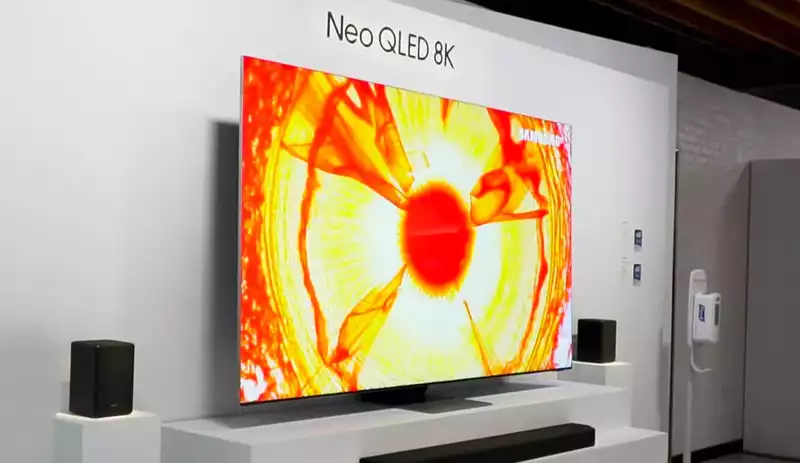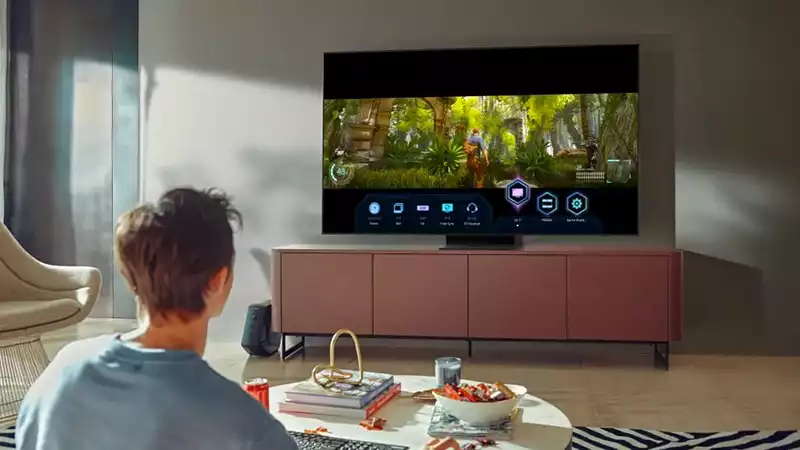You can also be interested in these:
- The new Samsung QD-OLED technology explained
- What are the Samsung KS8000 best settings?
- Full honest Samsung Galaxy Tab A6 review
- Google Pixel 6 will copy Samsung Galaxy S21 features
Sometimes we see a rather complex words play in the name of TV screen display technology related products, and it’s that there is so much variation and ambiguity right now that almost sure you won’t know what it is all about. This applies specifically to Samsung products, with so many options on its line-up it is some sort of a riddle to know exactly what we’re buying from them. In the QLED category, we already have the Direct Full Array and the Quantum Dots technologies, but now we have the Samsung Neo QLED with Quantum Matrix technology, also known as Pro Technology. In this article we will focus on the latter, trying to make comparisons with similar technologies to find those distinctive factors that make it unique.

What is the Samsung Quantum Matrix technology?
Samsung’s new Quantum Matrix technology bets for a new and improved micro-layering system using Quantum Mini LEDs, and the Quantum Matrix as the top-level controller of each LED unit.
If we were to speak about LED technology, we need to reference the way these units work, using a backlight to illuminate dozens of general zones in the whole TV screen display, where each zone encases up to one-hundred LEDs. The use of Quantum Mini LEDs takes all this to a new level, where each LED is no bigger than a grain of sand. Now, we are not talking about a hundred LEDs per zone, but tens of thousands of them on each. This allows TVs to be even more compact and as thin as 15 mm, sitting almost flush on the wall like a picture frame.
Previously, LEDs were built using a series of components on top of the units, making them a lot bulkier. There was a cradle-like component holding the LED controlling the electric current and on top of that a translucent capsule with a lens to help disperse the light. All these components were replaced by the Micro Layer technology. Now, each LED has a thin film right on top of the light emitting source delivering focused lighting. Now the screen can be filled with more LEDs for better, sharper and more vivid images.
The Quantum Matrix technology puts the cherry on top. This technology controls the overall backlight functionality of the panel with ultra-fine precision and accuracy. This allows New QLED TVs to be up to twice brighter than previous models, reducing significatively the blooming effect, which is where colored light emissions bleed to the surrounding areas distorting the colors. It goes without saying this also brings true-to-life colors, brighter whites and darker blacks. You will be able to see details, even if the TV image is in complete darkness.

The color depth also sees an improvement with the Quantum Matrix technology, going from the conventional 9 to 10 bits up to 12 bits in bright areas and 14 bits in darker areas. This parameter is not as clear to understand, although being in front of a 12 bits color depth TV, you will be able to tell the difference.
What about the Neo QLED technology? What is it?
The Quantum Matrix technology sits on top the Neo QLED platform, which refers to the panel, the backlighting and all the goodies integrated in this line of products. Originally, in a regular QLED TV, you had around 480 lighting zones. Now, using the Neo QLED FALD VA panels with Mini LEDs you have 1344 zones, almost 3 times that amount.
The purity and the range of the color have a wider palette and its ability to cover all sorts of color ranges, taking into consideration even the surrounding light conditions. There is a matte, almost like a canvas feel to its surface, that goes incredibly well when displaying a portrait or painting still image. Also, its new mounting system allows you to rotate the TV portrait or landscape on the wall, and the image will adapt automatically depending on its physical orientation, for those Tiktok’s fans and mobile content lovers.

For those gamers still shy about embracing TVs as a dedicated means to screen display option there is the Samsung, considering the better refresh rate, form factor and all the perks associated with a gaming monitor, there is the Samsung Neo Odyssey monitor, packed with Mini LEDs and 240 Hz.
In terms of the input ports, it is a little bit unclear if Samsung definitive layout will be 4 HDMI 2.1 ports, supporting 144 Hz refresh rate. Being so close to its release announcement, this detail remains to be confirmed down the road.
Quantum Matrix vs Quantum Matrix Pro
Now you might be asking, what is the differences between a Quantum Matrix vs Quantum Matrix Pro? As a matter of fact, they are all the same, except for the lighting zones on the TV, having the Quantum Matrix Pro 1.5 times more light zones than its counterpart. Samsung wanted to make the Pro version of this technology the top of the line for those who wants to best of the best. This version is the only Neo QLED TV in 85-inch format.
Neo QLED vs OLED
You might be familiar with previous Samsung technologies, like the OLED. This technology is about 5 years old and compared with the Neo QLED, doesn’t have backlighting, which in turn makes it dimmer in brightness and contrast with a lot less richness of colors. None the less, in terms of price and accessibility, the OLED TV is still the most sought-after product.
The OLED had something that even new technologies are struggling to replicate: The response rate of the LEDs. It is the second fastest TV display on the market, after the Super Speed IPS, reaching without any issue the 144 Hz refresh rate.

The eternal battle between the two screen display titans is the Samsung’s QLED vs the LG OLED, betting on brightness vs response speed respectively. Each technology has evolved as well and in the case of the OLED, we now have the OLED Evo with self-lit pixels and for QLED, the future points to the newer QD-OLED technology combining the best of the QLED and OLED worlds.
More stories like this
- The new Samsung QD-OLED technology explained
- What are the Samsung KS8000 best settings?
- Full honest Samsung Galaxy Tab A6 review
- Google Pixel 6 will copy Samsung Galaxy S21 features
- How to change your security PIN in Samsung devices
- How to connect Samsung Galaxy Note 8 to PC